Search
- Page Path
-
- HOME
- Search
- Original Article
- Instability of revised Korean Developmental Screening Test classification in first year of life
- Ji Eun Jeong, Yon Min Kim, Na Won Lee, Gyeong Nam Kim, Jisuk Bae, Jin Kyung Kim
-
Background: Early development is characterized by considerable variability.
Purpose: To investigate the stability of the revised Korean Developmental Screening Test (K-DST) classification of the development of healthy term 4–6 and 10–12 month-old infants. Methods: This study used data from the Korean Children’s Environmental Health study, a nationwide prospective birth cohort study. Sixty-nine healthy term infants (26 boys, 43 girls) underwent... -
DOI: https://doi.org/10.3345/cep.2024.00619 [Accepted]
- Review Article
- General Pediatrics
- Korean Developmental Screening Test for Infants and Children (K-DST): development, applications, and implications for future early childhood development interventions
- Dooyoung Kim, Young June Choe, Bilal Aurang Zeb Durrani, EunYoung Kim, Junghye Byeon, Baik-Lin Eun
- Clin Exp Pediatr. 2023;66(7):288-293. Published online December 22, 2022
-

· This review discusses the development and application of the Korean Developmental Screening Test for Infants and Children (K-DST) for ensuring early childhood development.
· Various studies have demonstrated the integral role of the K-DST in facilitating the detection of developmental delays and delivery of timely interventions.
· The tailoring of the K-DST to Korean infants and children suggests that other countries may further translate and adapt it.
- Neurology
- Worldwide national intervention of developmental screening programs in infant and early childhood
- Seunghyo Kim
- Clin Exp Pediatr. 2022;65(1):10-20. Published online September 30, 2021
-

∙ Prevalence rate of developmental disabilities has been reported from 8% to 15% and its rate is increasing worldwide.
∙ The critical period of intervention for developmental delay is before the child reaches 3 years of age.
∙ All primary care pediatricians should conduct developmental surveillance and screening tests to infants and children at scheduled visits. Through this, they are liable for providing early identification and timely intervention.
- Immunology
- Modern diagnostic capabilities of neonatal screening for primary immunodeficiencies in newborns
- Evgenia Olegovna Khalturina, Natalia Dmitrievna Degtyareva, Anastasiia Vasi’evna Bairashevskaia, Alena Valerievna Mulenkova, Anna Vladimirovna Degtyareva
- Clin Exp Pediatr. 2021;64(10):504-510. Published online March 25, 2021
-
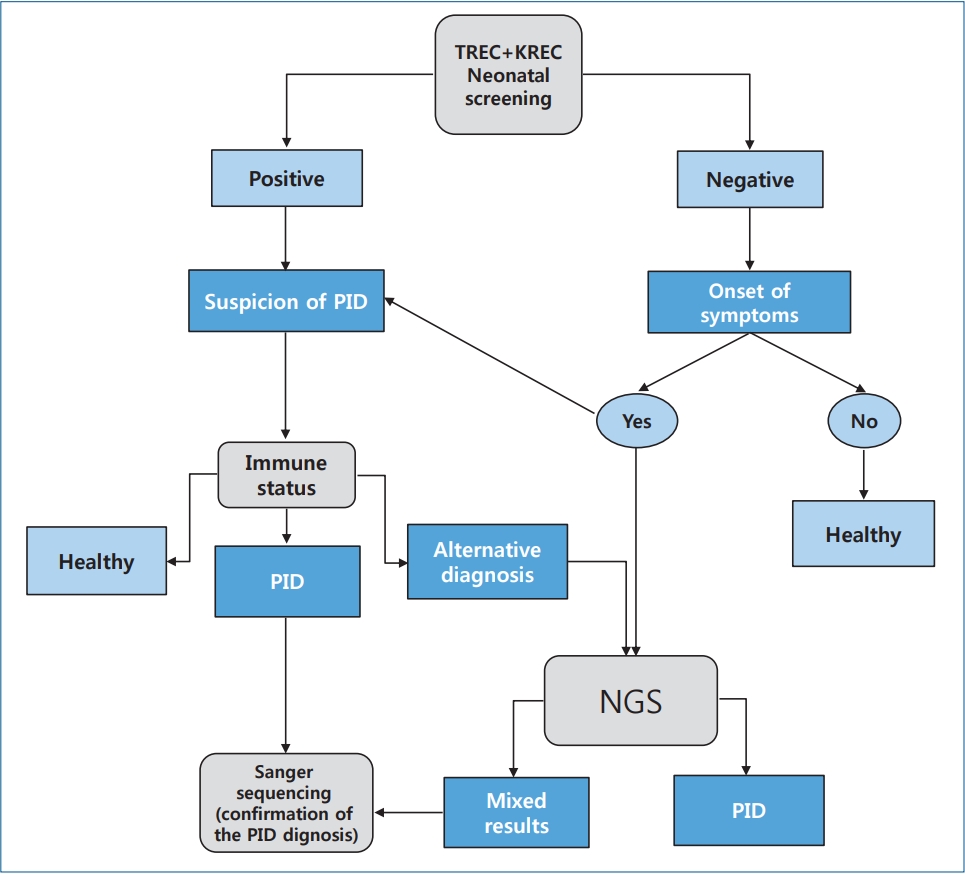
· Neonatal screening for primary immunodeficiency diseases (PIDs) enables early diagnosis and subsequent initiation of therapy.
· Excision of T-cell receptors and kappa-recombination excision circles are cheaper alternative PID screening methods.
· Sanger DNA sequencing remains the reference method for detecting PID; however, next-generation sequencing technology is increasingly used to diagnose it.
· Here we developed a graphical algorithm for diagnosing primary immunodeficiency syndrome based on modern methods of screening for primary immunodeficiencies in newborns.
- Original Article
- Allergy
- Cohort profile: National Investigation of Birth Cohort in Korea study 2008 (NICKs-2008)
- Ju Hee Kim, Jung Eun Lee, So Min Shim, Eun Kyo Ha, Dong Keon Yon, Ok Hyang Kim, Ji Hyeon Baek, Hyun Yong Koh, Kyu Young Chae, Seung Won Lee, Man Yong Han
- Clin Exp Pediatr. 2021;64(9):480-488. Published online January 5, 2021
-
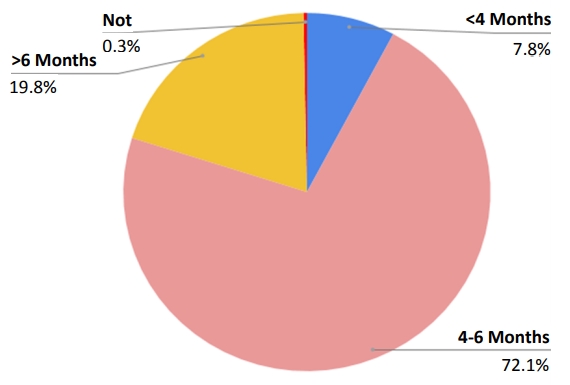
This national cohort study included all Korean children born in 2008 and 2009 observed over a period of more than 10 years. Our findings demonstrate that it is possible to analyze disease onset prior to hospitalization based on information such as lifestyle, eating habits, and risk factors by integrating National Health Insurance System data with national health screening data.
- Developmental and Behavioral Medicine
- Development of the Korean Developmental Screening Test for Infants and Children (K-DST)
- Hee Jung Chung, Donghwa Yang, Gun-Ha Kim, Sung Koo Kim, Seoung Woo Kim, Young Key Kim, Young Ah Kim, Joon Sik Kim, Jin Kyung Kim, Cheongtag Kim, In-Kyung Sung, Son Moon Shin, Kyung Ja Oh, Hee-Jeong Yoo, Hee Joon Yu, Seoung-Joon Lim, Jeehun Lee, Hae-Ik Jeong, Jieun Choi, Jeong-Yi Kwon, Baik-Lin Eun
- Clin Exp Pediatr. 2020;63(11):438-446. Published online May 14, 2020
-
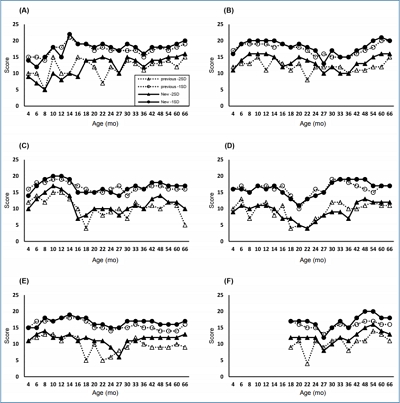
Question: Can the Korean Developmental Screening Test for Infants and Children (K-DST) be a useful screening tool for infants and children in Korea?
Finding: The K-DST has high reliability (internal consistency of 0.73–0.93, test-retest reliability of 0.77–0.88) and a high discriminatory ability with a sensitivity of 0.833 and specificity of 0.979.
Meaning: The K-DST is an effective and reliable screening tool for infants and children with neurodevelopmental disorders in Korea.
- Neonatology (Perinatology)
- Risk-based maternal group B Streptococcus screening strategy is compatible with the implementation of neonatal early-onset sepsis calculator
- Niek B. Achten, J. Wendelien Dorigo-Zetsma, Annemarie M.C. van Rossum, Rianne Oostenbrink, Frans B. Plötz
- Clin Exp Pediatr. 2020;63(10):406-410. Published online April 16, 2020
-
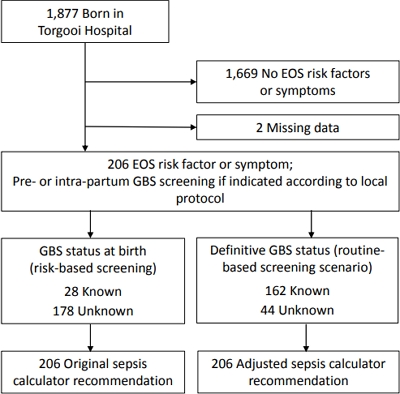
Question: To what extent does risk-based Group B Streptococcus (GBS) screening influence management recommendations by the early-onset sepsis (EOS) calculator?
Finding: In 97% of the newborn infants, the EOS calculator recommendation remained unchanged after the GBS status at birth was updated to the definitive GBS status.
Meaning: Risk-based GBS screening results are compatible with EOS calculator recommendations.
- Systematic review and meta-analysis
- Genetics and Metabolism
- Global prevalence of classic phenylketonuria based on Neonatal Screening Program Data: systematic review and meta-analysis
- Hamid Reza Shoraka, Ali Akbar Haghdoost, Mohammad Reza Baneshi, Zohre Bagherinezhad, Farzaneh Zolala
- Clin Exp Pediatr. 2020;63(2):34-43. Published online February 6, 2020
-
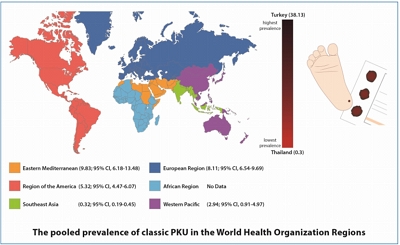
Question: What is the global prevalence of classic phenylketonuria based on Neonatal Screening Program Data?
Finding: The overall worldwide prevalence of the disease is 6.002 per 100,000 neonates. The highest prevalence (38.13) was reported in Turkey, while the lowest (0.3) in Thailand.
Meaning: This difference in the prevalence may be due to differences in the number of consanguineous marriages among the different regions, phenylalanine cutoff points, and sample sizes.
- Original Article
- Developmental and Behavioral Medicine
- Validity of the Korean Developmental Screening Test for very-low-birth-weight infants
- Chae Young Kim, Euiseok Jung, Byong Sop Lee, Ki-Soo Kim, Ellen Ai-Rhan Kim
- Clin Exp Pediatr. 2019;62(5):187-192. Published online March 20, 2019
-
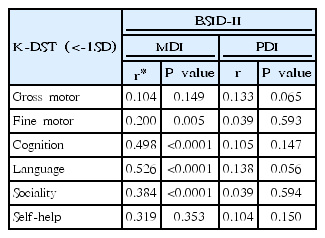
Purpose: The importance of the neurodevelopmental outcomes of very-low-birth-weight (VLBW) infants has been emphasized as their mortality rate has markedly improved. This study aimed to assess the validity of the Korean Developmental Screening Test (K-DST), a developmental screening tool approved by the Korean Society of Pediatrics, for the timely diagnosis of neurodevelopmental delay in VLBW infants. Methods: Subjects included VLBW infants...
- Neonatology (Perinatology)
- Hearing loss screening tool (COBRA score) for newborns in primary care setting
- Watcharapol Poonual, Niramon Navacharoen, Jaran Kangsanarak, Sirianong Namwongprom, Surasak Saokaew
- Clin Exp Pediatr. 2017;60(11):353-358. Published online November 27, 2017
-
Purpose To develop and evaluate a simple screening tool to assess hearing loss in newborns. A derived score was compared with the standard clinical practice tool.
Methods This cohort study was designed to screen the hearing of newborns using transiently evoked otoacoustic emission and auditory brain stem response, and to determine the risk factors associated with hearing loss of newborns in 3 tertiary...
- Developmental and Behavioral Medicine
- Usefulness of the Korean Developmental Screening Test for infants and children for the evaluation of developmental delay in Korean infants and children: a single-center study
- Chung-Hyuk Yim, Gun-Ha Kim, Baik-Lin Eun
- Clin Exp Pediatr. 2017;60(10):312-319. Published online October 20, 2017
-

Purpose To evaluate the usefulness of the Korean Developmental Screening Test (K-DST) for infants and children for developmental delay assessment.
Methods This study was based on retrospective studies of the results of the K-DST, Preschool Receptive-Expressive Language Scale (PRES), Sequenced Language Scale for Infants (SELSI), Childhood Autism Rating Scale (CARS), Modified Checklist for Autism in Toddlers (M-CHAT), electroencephalography, magnetic resonance imaging, and extensive...
- Neurology
- Single-center experience of the Korean-Developmental Screening Test for infants and children
- Chae-Ri Suh, Su Ye Sohn, Gun-Ha Kim, Seong-Kwan Jung, Baik-Lin Eun
- Clin Exp Pediatr. 2016;59(12):483-489. Published online December 31, 2016
-
Purpose We investigated the number of test takers of the Korean-Developmental Screening Test (K-DST) in a single children's hospital within a year, according to age, referral rate, and follow-up percentage.
Methods For this study, 4,062 children who visited and received K-DST at Woorisoa Children's Hospital between January and December 2015 were enrolled. Seven test sets were used according to the Korean National Health...
- Case Report
- Genetics and Metabolism
- Compound heterozygous mutations of
ACADS gene in newborn with short chain acyl-CoA dehydrogenase deficiency: case report and literatures review - Se Jin An, Sook Za Kim, Gu Hwan Kim, Han Wook Yoo, Han Hyuk Lim
- Clin Exp Pediatr. 2016;59(Suppl 1):S45-S48. Published online November 30, 2016
-
Short-chain acyl-CoA dehydrogenase deficiency (SCADD) is a rare autosomal recessive mitochondrial disorder of fatty acid β-oxidation, and is associated with mutations in the acyl-CoA dehydrogenase (
ACADS ) gene. Recent advances in spectrometric screening for inborn errors of metabolism have helped detect several metabolic disorders, including SCADD, without symptoms in the neonate period. This allows immediate initiation of treatment and monitoring, so...
- Original Article
- Thyroid dysfunction in very low birth weight preterm infants
- Ji Hoon Lee, Sung Woo Kim, Ga Won Jeon, Jong Beom Sin
- Clin Exp Pediatr. 2015;58(6):224-229. Published online June 22, 2015
-
Purpose Thyroid dysfunction is common in preterm infants. Congenital hypothyroidism causes neurodevelopmental impairment, which is preventable if properly treated. This study was conducted to describe the characteristics of thyroid dysfunction in very low birth weight infants (VLBWIs), evaluate risk factors of hypothyroidism, and suggest the reassessment of thyroid function with an initially normal thyroid-stimulating hormone (TSH) as part of a newborn...
- Case Report
- Asymptomatic maternal 3-methylcrotonylglycinuria detected by her unaffected baby's neonatal screening test
- Sun Hee Lee, Yong Hee Hong
- Clin Exp Pediatr. 2014;57(7):329-332. Published online July 23, 2014
-
3-methylcrotonyl-coenzyme A carboxylase (3MCC) deficiency is an autosomal recessive disorder in which leucine catabolism is hampered, leading to increased urinary excretion of 3-methylcrotonylglycine. In addition, 3-hydroxyisovalerylcarnitine levels increase in the blood, and the elevated levels form the basis of neonatal screening. 3MCC deficiency symptoms are variable, ranging from neonatal onset with severe neurological abnormality to a normal, asymptomatic phenotype. Although...
- Original Article
- Spectrum of patients with hypermethioninemia based on neonatal screening tests over 14 years
- Se Jung Oh, Yong Hee Hong, Yong Wha Lee, Dong Hwan Lee
- Clin Exp Pediatr. 2010;53(3):329-334. Published online March 15, 2010
-
Purpose : The neonatal screening test for homocystinuria primarily measures methionine by using a dried blood specimen. We investigated the incidence and clinical manifestations of homocystinuria, isolated hypermethioninemia, and transient hypermethioninemia among patients with hypermethioninemia on a neonatal screening test. Methods : We performed a retrospective study of 58 patients transferred to Shoonchunhyang Hospital because of hypermethioninemia on a neonatal... -
- One-year evaluation of the national health screening program for infants and children in Korea
- Jin Soo Moon, Soon Young Lee, Baik-Lin Eun, Young Key Kim, Young Key Kim, Son Moon Shin, Hea Kyoung Lee, Hee Jung Chung
- Clin Exp Pediatr. 2010;53(3):307-313. Published online March 15, 2010
-
Purpose:Results of the Korea National Health Screening Program for Infants and Children, which was launched in November 2007, were evaluated for future research and policy development. Methods:Data from a total of 2,729,340 cases were analyzed. Five visiting ages, such as 4, 9, 18, 30, and 60 months, were included. Several parameters such as stunting, obesity, and positive rate of developmental... -
- The current child and adolescent health screening system: an assessment and proposal for an early and periodic check-up program
- Baik-Lin Eun, Jin Soo Moon, So-Hee Eun, Hea Kyoung Lee, Son Moon Shin, In Kyung Sung, Hee Jung Chung
- Clin Exp Pediatr. 2010;53(3):300-306. Published online March 15, 2010
-
Purpose : Recent changes in the population structure of Korea, such as rapid decline in birth rate and exponential increase in old-aged people, prompted us to prepare a new health improvement program in children and adolescents. Methods : We reviewed current health screenings applied for children and adolescents in Korea and other developed countries. We collected and reviewed population-based data... -
- Thyroid dysfunction in premature infants
- Ki Bae Hong, Ji Yun Park, Young Pyo Chang, Jeesuk Yu
- Clin Exp Pediatr. 2009;52(9):991-998. Published online September 15, 2009
-
Purpose:Thyroid hormone is essential for development of the brain in early life. Thyroid dysfunction is more common in the first 2-4 postnatal weeks of life in premature infants than in term infants. This study aimed to identify the prevalence and clinical course of thyroid dysfunction in prematurity. Methods:Premature infants admitted to and given neonatal screenings at Dankook University Hospital between... -
- Review Article
- Assessment of retinopathy of prematurity (ROP) revisited
- Jeong Hun Kim, Young Suk Yu
- Clin Exp Pediatr. 2009;52(1):22-27. Published online January 15, 2009
-
Retinopathy of prematurity (ROP) is a major cause of blindness that affects premature infants. With advances in neonatology, ROP is likely to emerge as the most serious problem of vision loss in children even in developed countries; such a situation could be called the third epidemic of ROP. However, controversy and uncertainty still surround favorable outcomes of ROP. For successfully... -
- Original Article
- Interpretation of screening for congenital adrenal hyperplasia in preterm infants
- Hye Rim Chung, Choong Ho Shin, Sei Won Yang, Kyong Ah Yun, Young Ah Lee, So Eun Park, Chang Won Choi, Byung Il Kim, Jung Hwan Choi, Junghan Song
- Clin Exp Pediatr. 2008;51(6):616-621. Published online June 15, 2008
-
Purpose : This study was undertaken to identify factors that influence 17-OHP levels in preterm infants and to suggest a reasonable follow-up schedule of screening for congenital adrenal hyperplasia (CAH) in preterm infants. Methods : The 17-OHP concentrations in filter paper blood spots of 427 preterm infants were obtained. The effects of gestational age (GA), systemic diseases, and antenatal dexamethasone... -
- Review Article
- The prevalence of pediatric endocrine and metabolic diseases in Korea
- Dong Hwan Lee
- Clin Exp Pediatr. 2008;51(6):559-563. Published online June 15, 2008
-
The government neonatal screening program has a 17-years history. Therefore, it can now provide information on the prevalence of endocrine and metabolic diseases which included in neonatal screening. Knowledge of the prevalence of metabolic diseases is very important with these results, the most effective screening methods can be determined and diseases can be identified that should be added to neonatal... -
- Original Article
- The impact of early detection through school urinary screening tests of membranoproliferative glomerulonephritis typeⅠ
- Sung-Hoon Chung, Sung-Sin Park, Sung-Do Kim, Byoung-Soo Cho
- Clin Exp Pediatr. 2007;50(11):1104-1109. Published online November 15, 2007
-
Purpose : Since 1998, school urinary screening tests have been performed on Korean school children. We could detect and treat so many asymptomatic chronic renal disease in early stage. We investigated the efficacy of school urinary screening tests from children with membranoproliferative glomerulonephritis (MPGN) type I. Methods : We analyzed the characteristics and prognosis of 18 patients with MPGN type I... -
- Review Article
- Newborn hearing screening
- Lee Suk Kim
- Clin Exp Pediatr. 2007;50(1):7-13. Published online January 15, 2007
-
Hearing loss in newborns is the most frequently occurring birth defect. If hearing impaired children are not identified and managed early, it is difficult for many of them to acquire the fundamental language, social and cognitive skills that provide the foundation for later schooling and success in society. All newborns, both high and low risk, should be screened for hearing... -
- Newborn screening of inherited metabolic disease in Korea
- Dong Hwan Lee
- Clin Exp Pediatr. 2006;49(11):1125-1139. Published online November 15, 2006
-
In 1991, the Ministry of Health & Social affairs adopted a nationwide service program for neonatal screening of phenylketonuria, galactosemia, maple syrup urine disease, homocystinuria, histidinemia & congenital hypothyroidism for newborns delivered from low class pregnant women registered in health centers. Government decreased the test items from six to two, PKU & congenital hypothyroidism to increase test numbers with same... -
- Original Article
- Analysis of newborn hearing screening using automated auditory brainstem response
- Sung Won Park, Byung Ho Yun, Kyung Ah Kim, Sun Young Ko, Yeon Kyung Lee, Son Moon Shin, Sung Hwa Hong
- Clin Exp Pediatr. 2006;49(10):1056-1060. Published online October 15, 2006
-
Purpose : As hearing ability affects language and cognitive development, early detection and intervention of congenital hearing defects is very important. We analyzed the result of newborn hearing screening using automated auditory brainstem response and estimated the incidence of congenital hearing defects in newborn infants in Korea. Methods : Hearing screening tests were done on 7,218 newborn infants who were... -
- Neonatal hearing screening in a neonatal intensive care unit using distortion product otoacoustic emissions
- Do Young Kim, Sung Shin Kim, Chang Hwi Kim, Shi Chan Kim
- Clin Exp Pediatr. 2006;49(5):507-512. Published online May 15, 2006
-
Purpose : Early detection and intervention of hearing impairment is believed to improve speech and language development and behavior of children. The aim of this preliminary study was to determine the prevalence of hearing impairments, and to identify the association of risk factors relating to refer response in high risk neonates who were screened using distortion product otoacoustic emissions (DPOAE). Methods... -
- Follow-up of children with isolated microscopic hematuria detected in a mass school urine screening test
- Mi-sun Yum, Hoe Soo Yoon, Joo Hoon Lee, Hyewon Hahn, Young Seo Park
- Clin Exp Pediatr. 2006;49(1):82-86. Published online January 15, 2006
-
Purpose : The isolated microscopic hematuria is the most common abnormality detected by school urinary screening, but there is no consensus about the range of investigations and long-term outcomes of isolated hematuria in children yet. This study aims to elucidate the prognosis of hematuria and the range of diagnostic studies by follow-up results. Methods : Students with isolated hematuria who were... -
- Usefulness of Korean Infant Developmental Screening Test in Premature Infants
- Dong Han Shin, Hee Sun Lee, Jee Yeon Lee, Byung Min Choi, Baik-Lin Eun, Young Sook Hong, Joo Won Lee
- Clin Exp Pediatr. 2005;48(12):1337-1341. Published online December 15, 2005
-
Purpose : This study aimed to evaluate the usefulness of Korean Infant Development Screening Test in predicting delayed development in premature infants. Methods : A total of 74 children with histories of prematurity, who visited the pediatric neurology clinic of Korean University Ansan Hospital from August, 2002 to July, 2004, were examined, using the Korean Infant Development Screening Test. They were... -
- Investigation of Automated Neonatal Hearing Screening for Early Detection of Childhood Hearing Impairment
- Jeong Il Seo, Si Uk Yoo, Sung Hyeon Gong, Kwang Su Hwang, Hyeon Jung Lee, Joong Pyo Kim, Hyeon Choi, Bo Young Lee, Ji Sun Mok
- Clin Exp Pediatr. 2005;48(7):706-710. Published online July 15, 2005
-
Purpose : Early diagnosis of congenital hearing loss through the neonatal hearing screening test minimizes language defect. This research intends to identify frequency of congenital hearing loss in infants through neonatal hearing screening test with the aim of communicating the importance of hearing test for infants. Methods : From May 20, 2003 to May 19, 2004, infants were subjected to Automated... -
-

-
-
Impact Factor3.2
-
8.02023CiteScore94th percentilePowered by
-









